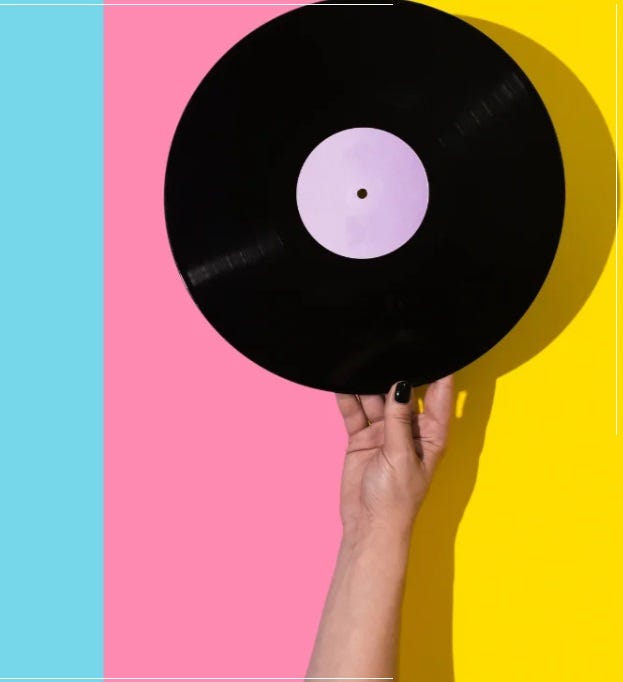The Allure of Vinyl Records

Vinyl records have made a remarkable resurgence in recent years, captivating a new generation of music lovers while continuing to enchant long-time aficionados. Despite the convenience of digital streaming, vinyl offers a tangible and immersive listening experience that resonates deeply with many. This exploration of vinyl records encompasses their history, production, cultural significance, and the reasons behind their enduring appeal.
A Brief History
The history of vinyl records dates back to the late 19th century. Initially, sound was recorded on cylinder formats, but by the 1920s, flat discs made from shellac became the norm. These early records were relatively brittle and produced lower sound quality compared to later innovations. The introduction of vinyl in the late 1940s marked a turning point. Unlike shellac, vinyl was more durable, flexible, and capable of producing better sound fidelity.
The 33 1/3 RPM LP (long-playing) record, introduced by Columbia Records in 1948, allowed for longer playing times — up to 30 minutes per side. This innovation transformed the music industry, as albums could now feature multiple tracks. In contrast, RCA Victor introduced the 45 RPM single, which became the standard for shorter tracks. Over the decades, vinyl records became synonymous with the music of the 20th century, from jazz and rock to disco and hip-hop.
The Production Process
Creating a vinyl record is a complex and intricate process. It begins with a master recording, which is usually created digitally or on analog tape. From this master, a metal stamper is produced through a process called electroplating. The stamper is then used to press the vinyl, which is heated and formed into discs. The grooves that carry the music are cut into the surface of the vinyl, translating the sound waves into physical patterns.
Once pressed, the records are packaged, often with elaborate album artwork and liner notes that enhance the overall experience. This physicality is a significant part of vinyl’s charm, as collectors often appreciate the aesthetics of album covers just as much as the music itself.
Cultural Significance
Vinyl records have always held a cultural significance that extends beyond mere music playback. They symbolize various eras and movements, from the jazz age to the rock revolution of the 1960s. Album art has often been used as a medium for artistic expression, showcasing the creativity of musicians and designers alike. Iconic covers, like The Beatles’ “Sgt. Pepper’s Lonely Hearts Club Band” or Pink Floyd’s “The Dark Side of the Moon,” have become cultural touchstones.
Moreover, vinyl records foster a sense of community. Record stores, once prevalent in every neighborhood, served as gathering spots for music enthusiasts. The act of browsing through crates of records, discovering hidden gems, and sharing recommendations with fellow collectors creates a unique camaraderie. Events like Record Store Day have further solidified this sense of community, celebrating independent record shops and the joy of vinyl collecting.
The Resurgence of Vinyl
The resurgence of vinyl records can be attributed to several factors. For one, there is a growing discontent with the ephemeral nature of digital music. While streaming services offer convenience, many listeners find that they lack the engagement and satisfaction of physically interacting with music. Vinyl offers a more intentional listening experience, encouraging listeners to slow down and appreciate each album as a cohesive work of art.
Additionally, the tactile nature of vinyl records — picking up the disc, placing it on a turntable, and carefully setting the needle — adds to the overall ritual of listening. Many enthusiasts revel in the warm, rich sound that vinyl provides, often described as more authentic and immersive than digital formats. The imperfections of vinyl, such as pops and crackles, can even enhance the listening experience, lending a sense of character to the music.
The Vinyl Community Today
The modern vinyl community is vibrant and diverse. Social media platforms and online forums allow collectors to share their passion, showcasing their collections and discussing everything from rare finds to pressing variations. Vinyl fairs and pop-up shops have become popular, further enhancing the culture around record collecting. Many contemporary artists are now releasing their albums on vinyl, recognizing the format’s enduring appeal and the unique connection it fosters with listeners.
Record labels are also capitalizing on this revival, producing high-quality reissues of classic albums, often accompanied by bonus tracks, new artwork, and liner notes. Special editions, colored vinyl, and audiophile-grade pressings have become highly sought after among collectors. This trend not only honors the legacy of iconic albums but also introduces them to new audiences.
Conclusion
The world of vinyl records store is rich with history, artistry, and community. As digital music continues to dominate, vinyl offers an alternative that many find refreshing and fulfilling. Its resurgence speaks to a deeper desire for connection — not just to music, but to the physical and emotional experiences that accompany it. Whether it’s the crackle of the needle finding its groove or the ritual of flipping the record, vinyl remains a cherished medium that continues to inspire and unite music lovers around the globe. The allure of vinyl records is not merely about nost

).png)

Comments
Post a Comment